Not so long ago on our website an overview of the drive 950 PRO is the fastest storage device on the consumer market in 2016. Second in ranking is the 850 PRO line of SATA 3.0. And again the South Korean company belongs to the fastest drive in its class. Series 850 EVO — and we will get acquainted at once with two models of different form factors — offers high performance coupled with a small price. This attractive symbiosis has been achieved by transferring the TLC memory in three-dimensional space. The technology is called 3D V-NAND. And seriously increased the reliability of the drives.
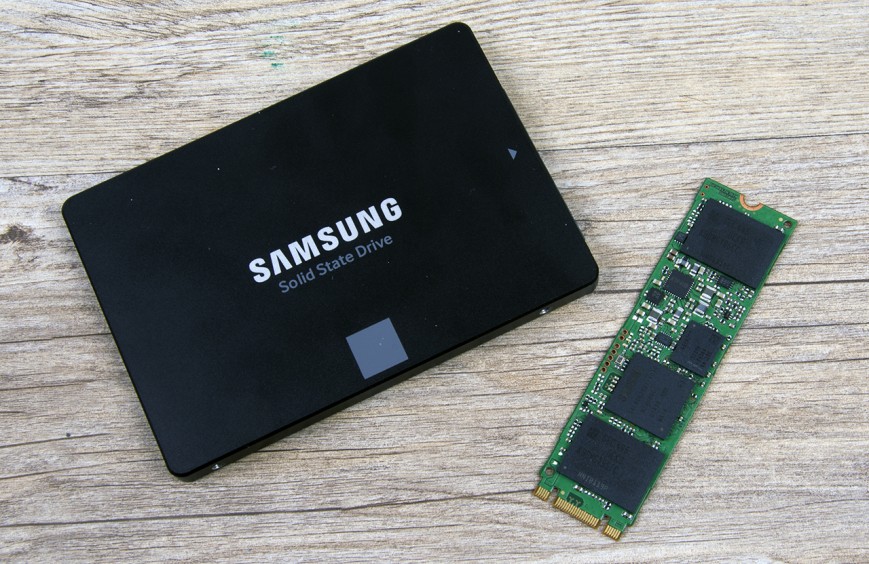
Samsung 850 EVO
Technical characteristics and design features
“Experiments” with three-bit TLC memory on the buyers of South Korean manufacturer began in 2013. Past generation 840 EVO — I think a good though about the reliability of these SSDS were a lot of disputes, because the number of write cycles of the cells have less TLC than MLC/SLC. Speed characteristics of this type of memory is also inferior, so as to store three bits of data uses eight voltage levels, the removal of which requires more time. MLC — half. This increases the wear of the cells. With the introduction of new technological standards the only problem is compounded, because a reduction of cell size (a thinning of the dielectric layer) leads to the leakage of charge off the floating gate.
The use of three-dimensional structures of 3D V-NAND solves both problems. First, layer-by-layer TLC packaging takes up less space than, for example, planar MLC. Conclusion: there is no point chasing after the reduction process. The memory in the lines of the 850 PRO and 850 EVO are produced on 40-nanometer “prehistoric” standards, which seriously increases its reliability. In Samsung say that the likelihood of errors in data reading with TLC V-NAND 10 times lower than that of an ordinary planar TLC. Words are supported: on all drives 850 EVO series covers 5-year warranty. Competitors offer basically 3 years.
Second, in TLC V-NAND reduced the number of pulses applied to the gate of governors of the cells. Increased productivity. As a result, the 850 EVO range slightly inferior to the 850 PRO in terms of performance. With drives of different sizes have approximately the same performance. Serious bias (according to characteristics) between the models is not observed.
The review covers two SSDS with the same capacity of 500 GB. Drives with SATA 3.0 M. 2 and have similar technical characteristics. Of course, all using a 40-nanometer memory TLC V-NAND capacity of 128 GB crystals. Series 850 EVO SATA 3.0 consists of four models. The unit capacity of 1 terabyte a few stand out from the crowd, since it is based on more efficient controller MEX. This same processor is used in the “termotehnica” 850 PRO. Drives with interface M. 2 a total of three. In printed circuit Board format 2280 with two keys of “B” and “M”.
Samsung 850 EVO
Interface
SATA 3.0
M. 2
Marking models
MZ-75E120BW
MZ-75E250BW
MZ-75E500BW
MZ-75E1T0BW
MZ-N5E120BW
MZ-N5E250BW
MZ-N5E500BW
Volume
120 GB
250 GB
500 GB
1 TB
120 GB
250 GB
500 GB
Memory
Samsung 40 nm TLC V-NAND, 128 GB, 32 layers
Controller
Samsung MGX
Samsung MEX
Samsung MGX
Buffer memory
256 MB LPDDR2-1066
512 MB LPDDR2-1066
1024 MB LPDDR2-1066
512 MB LPDDR3
Maximum speed sequential read/write
540/520 MB/s
540/500 MB/s
Maximum speed of random read/write
000/88 94 000 IOPS
000/88 97 000 IOPS
98 000/90 000 IOPS
000/89 97 000 IOPS
Resource records
75 TB
150 TB
75 TB
150 TB
Warranty
5 years
Price
4600 RUB.
8100 RUB.
12 400 RUB.
24 500 rubles.
4800 rubles.
7000 rubles.
12 500 rubles.
Buy
Call vertelki:Samsung MZ-75E120BW3inline
Call vertelki:Samsung MZ-75E250BW3inline
Call vertelki:Samsung MZ-75E500BW3inline
Call vertelki:Samsung MZ-75E1T0BW3inline
Call vertelki:Samsung MZ-N5E120BW3inline
Call vertelki:Samsung MZ-N5E250BW3inline
Call vertelki:Samsung MZ-N5E500BW3inline
Is in the line and 850 EVO series mSATA connector. Old, dead-end standard, which is used in tiny computers (e.g., Intel NUC), laptops and some motherboards. Modern solutions I have not met. And yet the availability of this series — a great way to rejuvenate your car.
A characteristic feature of the 850 EVO line: the lack of storage of any related equipment. In a cardboard box, in addition to the device, resting just a brief user manual.
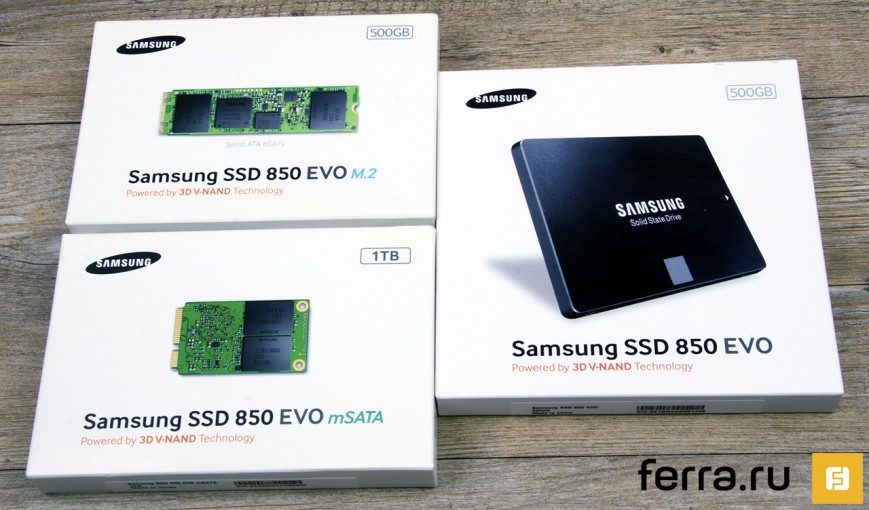
Packing solid state drives Samsung 850 EVO
The thickness of the body all SATA drive 850 EVO series is 7 mm. Therefore, the device is suitable for most laptops. Inside — dual-core MGX controller and the memory chips. Basic — four 128-Gigabyte chips TLC V-NAND. Each such chip contains eight 16-Gigabyte crystals grown on 40-nanometer process technology. Additional IC buffer DDR. The 850 EVO MZ-75E500 volume of 500 GB is equipped with 512 MB of LPDDR2-1066.
By the way, atypical volume of 120 GB, 250 GB, 500 GB — is characterized by, first, support, TurboWrite technology. Namely, the part of cells TLC (~3,5%) plays the role of the SLC buffer. Secondly, the unused memory is designed for garbage collection and wear-leveling. All 850 EVO support TRIM. Independent garbage collection is not performed. In 2016, this algorithm cannot be considered a disadvantage.
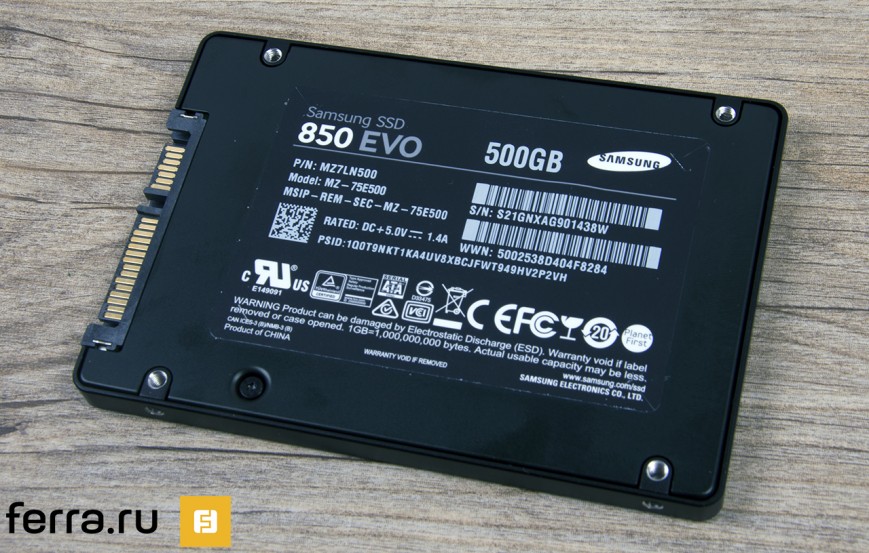
Samsung 850 EVO MZ-75E500
Drives with interfaces M. 2 and mSATA SATA came later-series. They have a different technical layout. The model MZ-N5E500 only two chips TLC V-NAND. Each volume of 256 GB. Moreover, instead of LPDDR2 as a buffer is used LPDDR3. On the reverse side of the PCB has a landing place for soldering two chips TLC V-NAND. Perhaps in the foreseeable future there will be terabyte model.
All drives 850 EVO series support AES-256 encryption, as well as the standards TCG Opal 2.0 and IEEE-1667.
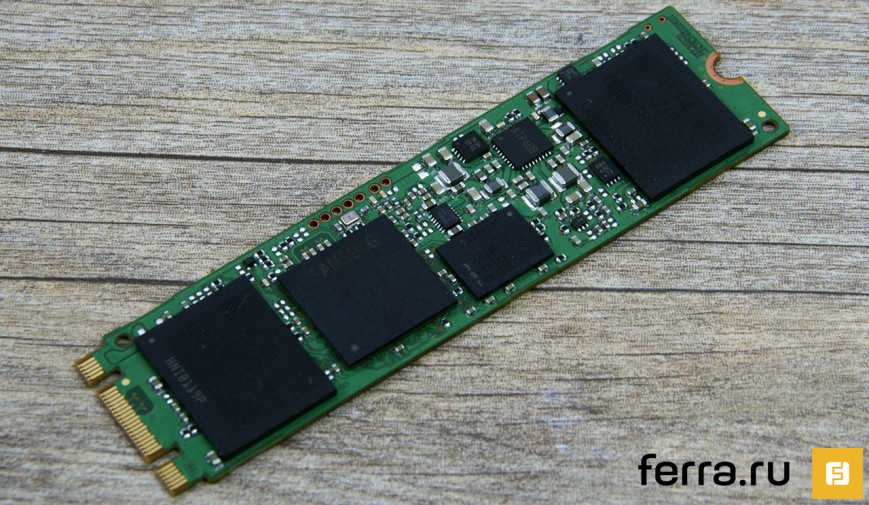
Samsung 850 EVO MZ-N5E500
Testing
Test stand:
- Processor: Intel Core i7-4790K
- CPU cooler: ENERMAX LIQTECH 240
- Motherboard: MSI Z97 MPOWER
- RAM: DDR3-2133 2x 8 GB
- Storage: Samsung 850 EVO
- Power supply: Corsair HX850i, 850W
- Peripherals: Samsung U28D590D, ROCCAT ARVO, ROCCAT SAVU
- Operating system: Windows 8.1 x64
Get down to testing. Since everything is relative, it is possible to determine the level of performance of 850 EVO series we will help the senior line — the 850 PRO and SSD Blast from Patriot, based on a fairly common controller Phison PS3110-S10 and planar memory TLC.
According to the official technical specifications, M. 2 model 850 EVO 500 GB slightly inferior SATA drive in the speed of sequential write. In practice we see that both SSDS exhibit identical performance. At least in the benchmark ATTO. Speed drives meets the stated manufacturer figures.
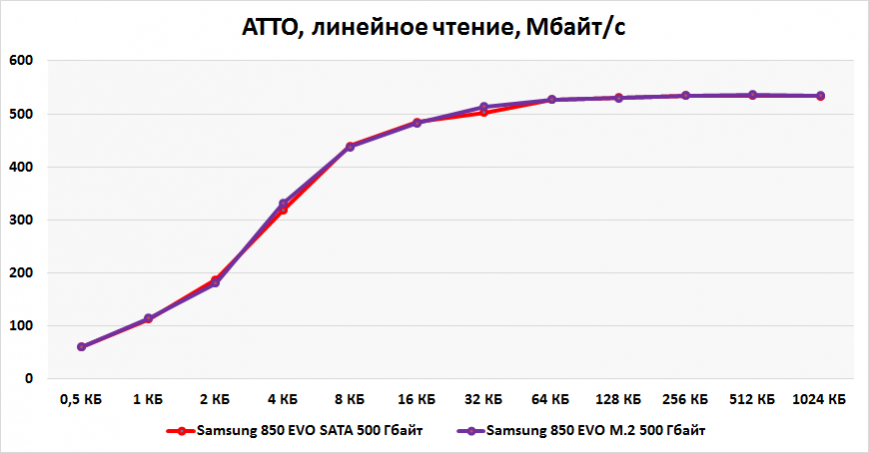
The results of testing Samsung 850 EVO MZ-and MZ 75E500-N5E500 in ATTO (linear reading)
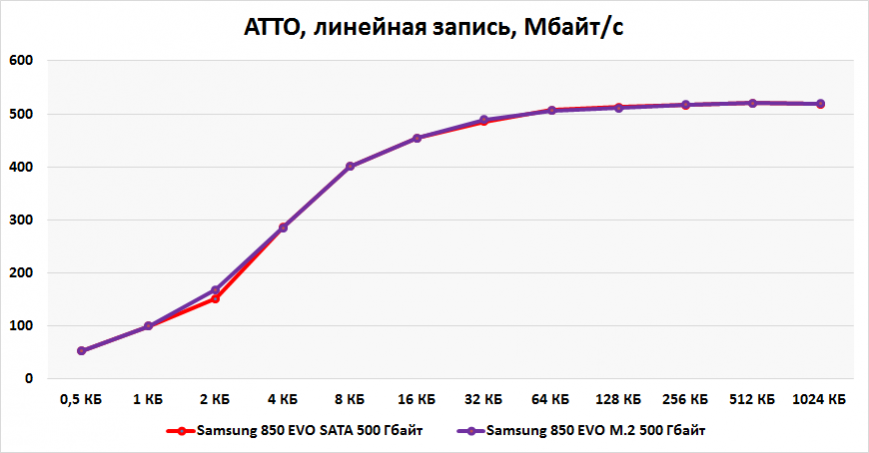
The results of testing Samsung 850 EVO MZ-and MZ 75E500-N5E500 in ATTO (linear recording)
Series 850 EVO naturally inferior to the more expensive 850 PRO line, which is logical. Especially noticeable is the difference in a read operation. Here it reaches 7%.
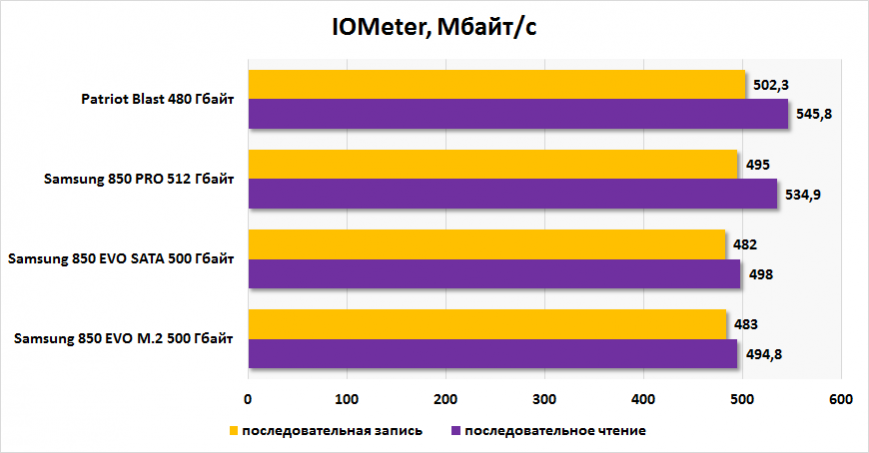
The results of testing Samsung 850 EVO MZ-and MZ 75E500-N5E500 in IOMeter (linear reading/writing)
If in subsequent operations read/write Patriot Blast was faster drives Samsung (850 PRO) in the notoriously difficult operations random 4-KB blocks Phison PS3110-S10 frankly blown away. Especially in IOMeter. As for the 850 EVO line, while in CrystalDiskMark it is practically not inferior to the more expensive 850 PRO.
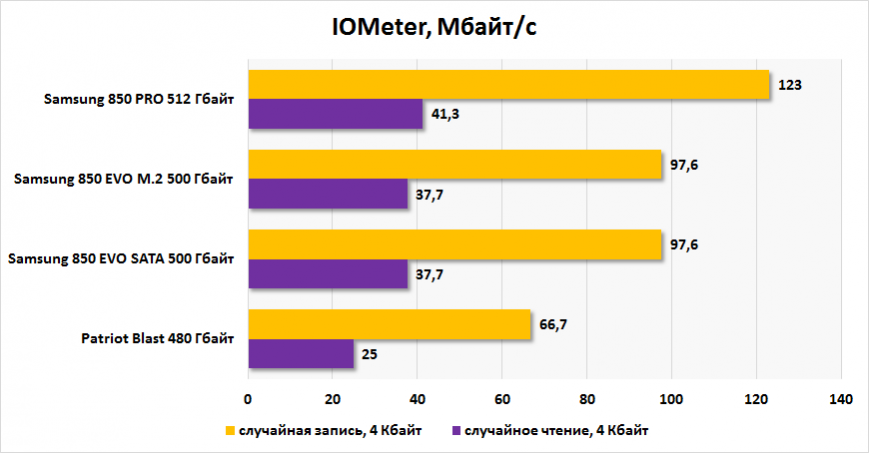
The results of testing Samsung 850 EVO MZ-and MZ 75E500-N5E500 in IOMeter (random reading/writing)
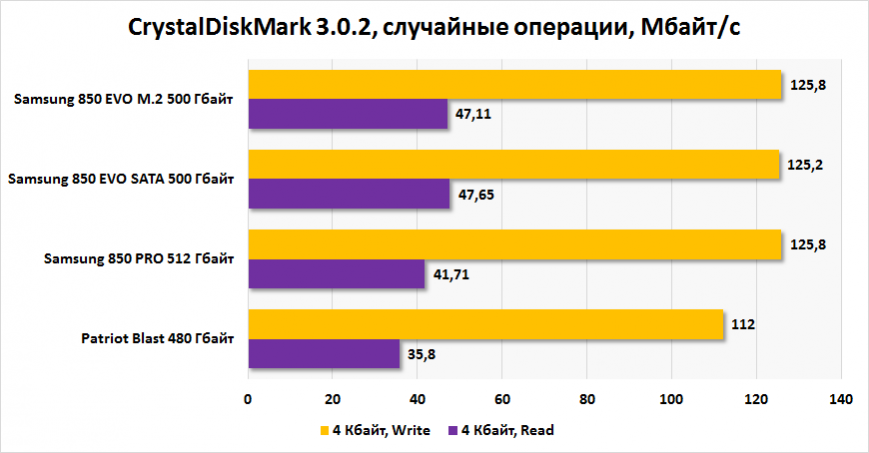
The results of testing Samsung 850 EVO MZ-and MZ 75E500-N5E500 in CrystalDiskMark (random read/write)
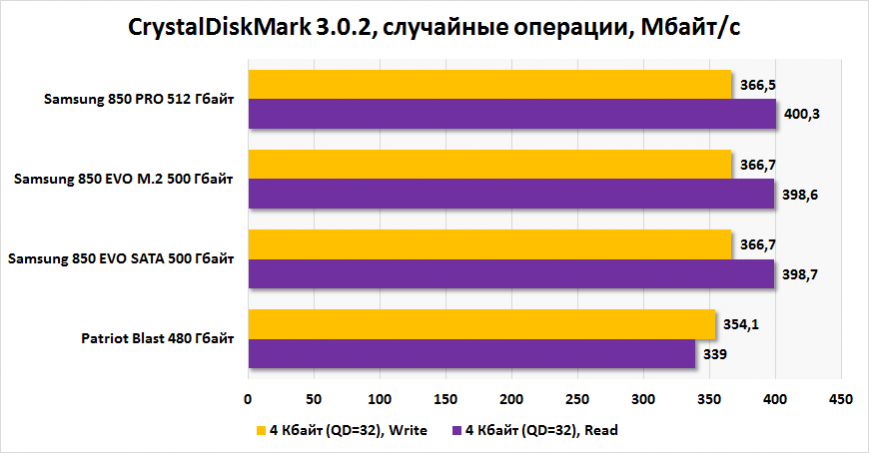
The results of testing Samsung 850 EVO MZ-and MZ 75E500-N5E500 in CrystalDiskMark (random read/write)
Mixed load imposes serious requirements to the controller of any SSD. Here we see a slight CPU advantage over MEX MGX. Phison PS3110-S10 was again behind.
Practically in all tests the difference between SATA and M. 2 storage no.
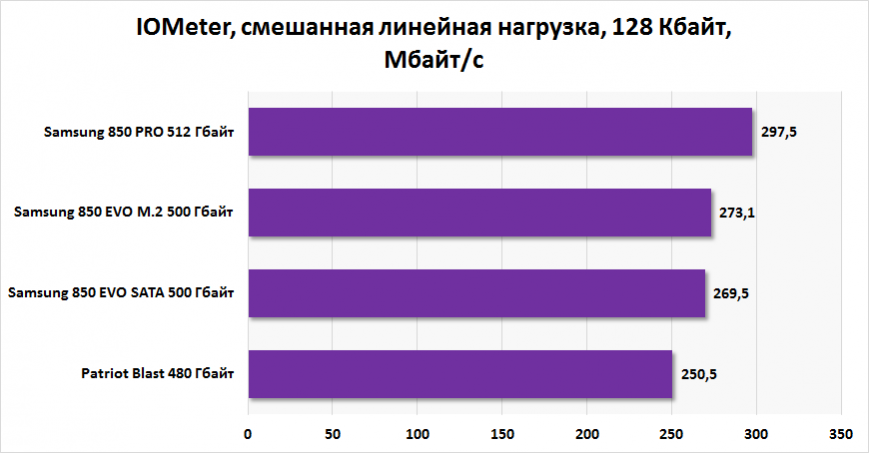
The results of testing Samsung 850 EVO MZ-and MZ 75E500-N5E500 in IOMeter (mixed load)
We go from synthetics to simulate real tasks. In PCMark 7 drives 850 EVO 850 PRO lost approximately 1000 points or 14%. Patriot Blast behind other SSD 38% and 60%, respectively.
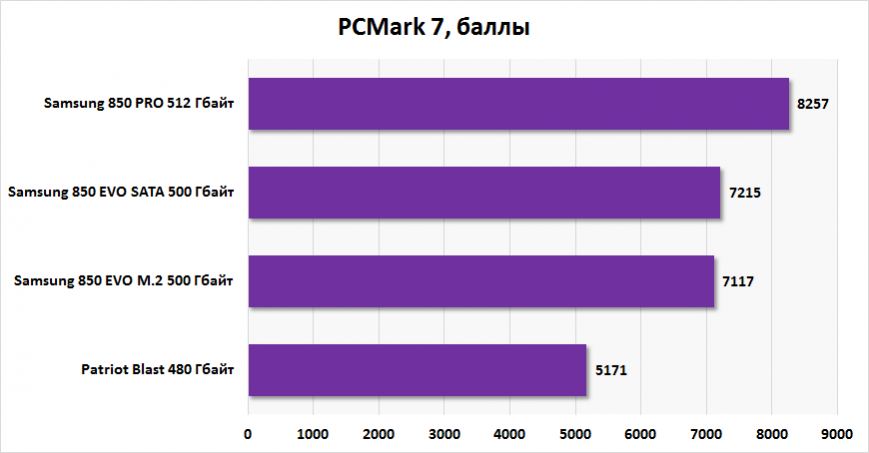
The results of testing Samsung 850 EVO MZ-and MZ 75E500-N5E500 in PCMark 7 (overall score)
Overall between the models MZ-and MZ 75E500-N5E500 equality again, though PCMark 7 gives a slight advantage MZ-75E500.
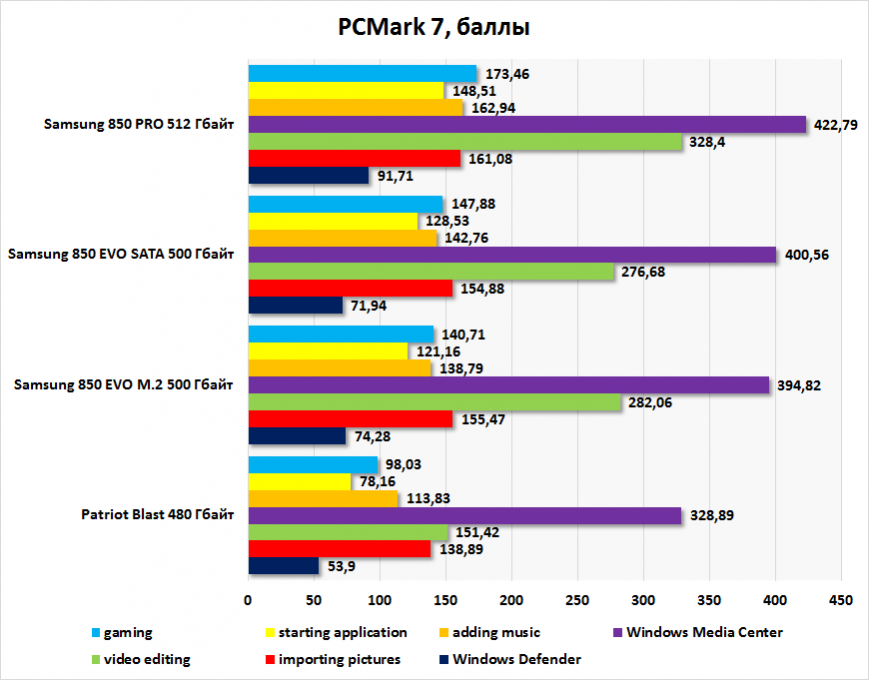
The results of testing Samsung 850 EVO MZ-and MZ 75E500-N5E500 in PCMark 7 (patterns)
In IOMeter patterns, imitating the work of workstations and servers, the 850 EVO drives faster than 850 PRO. “Proshka” is seriously lagging behind. Not news, because similar results had demonstrated and 128-Gigabyte model.
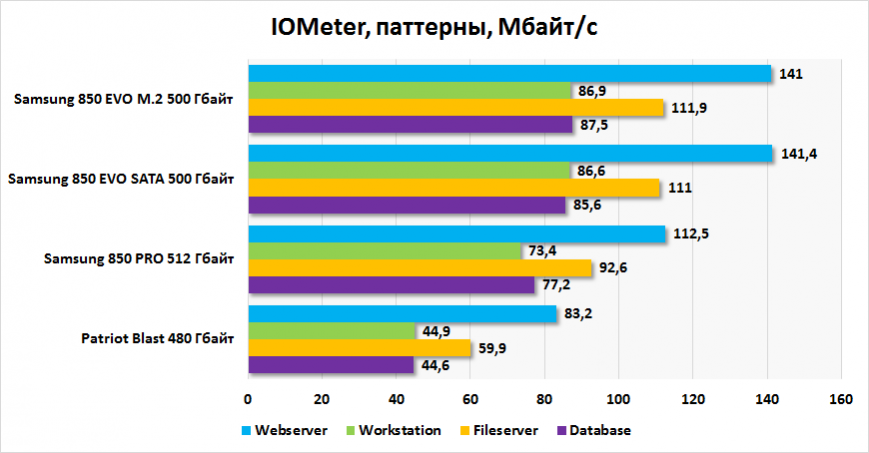
The results of testing Samsung 850 EVO MZ-and MZ 75E500-N5E500 in IOMeter (patterns)
TurboWrite technology 500 GB drives does not affect the performance of devices reviewed today. The presence of pseudosasa SLC will be useful for younger models. Both SSDS behave quite stable throughout time, while they do not need TRIM. Serious differences in linear reads/writes no, the drives don’t overheat.
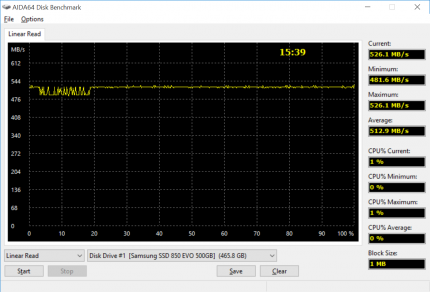
Linear read/write Samsung 850 EVO MZ-75E500
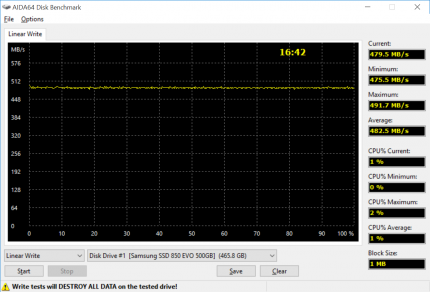
Linear read/write Samsung 850 EVO MZ-75E500
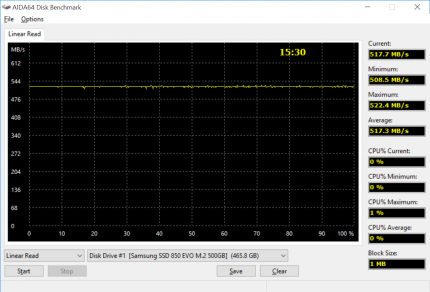
Linear read/write Samsung 850 EVO MZ-N5E500
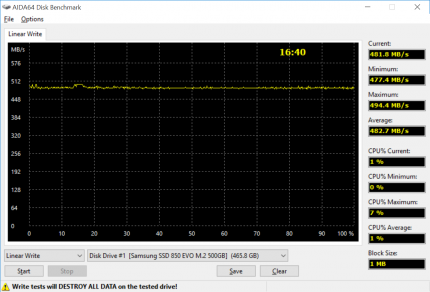
Linear read/write Samsung 850 EVO MZ-N5E500
Competitors and analogues
The competition series 850 EVO I said. It’s the countless hordes of drives on the controller Phison PS3110-S10 and planar memory TLC. As showed the testing, they have no chance, because the performance is much lower, and the prices are comparable to those that Samsung offers. That’s the main plus closed business model (own production): you dictate the terms to the competitors, and not go at them on occasion.
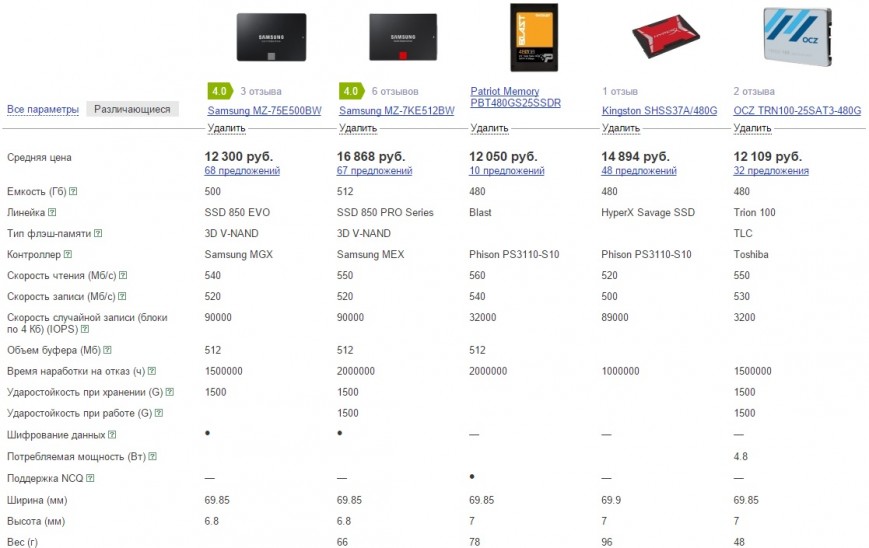
Competitors Samsung 850 EVO
In conclusion

In 2015 Samsung owned more than 40% of the SSD market. This statistical fact clearly proves the effectiveness of the closed business model is the South Korean company in this segment of the market. Namely, to achieve total superiority over the competitors will need to produce most of the elements of the solid state drive. Recently the Koreans have released a line of 650 and 750 EVO, and this means that the market share of Samsung in the consumer sector in 2016 will only increase. Monopoly? Possible. However, to find fault with considered today a 500GB EVO models is practically impossible. In terms of performance they are slightly inferior to the more expensive 850 PRO line. Koreans know how to do SSD. Convinced of it once again. Competitors for the same price offer solutions with less performance and less warranty.
Drives format SATA and M. 2 showed the same results. Choose a device depending on the interface, which is preferable. Model MZ-and MZ 75E500-N5E500 receive the award “Good buy”.
Samsung 850 EVO
Pros:
Cons:
- High performance;
- 5 year warranty;
- Three types of interfaces;
- Low cost.
- Not found.
